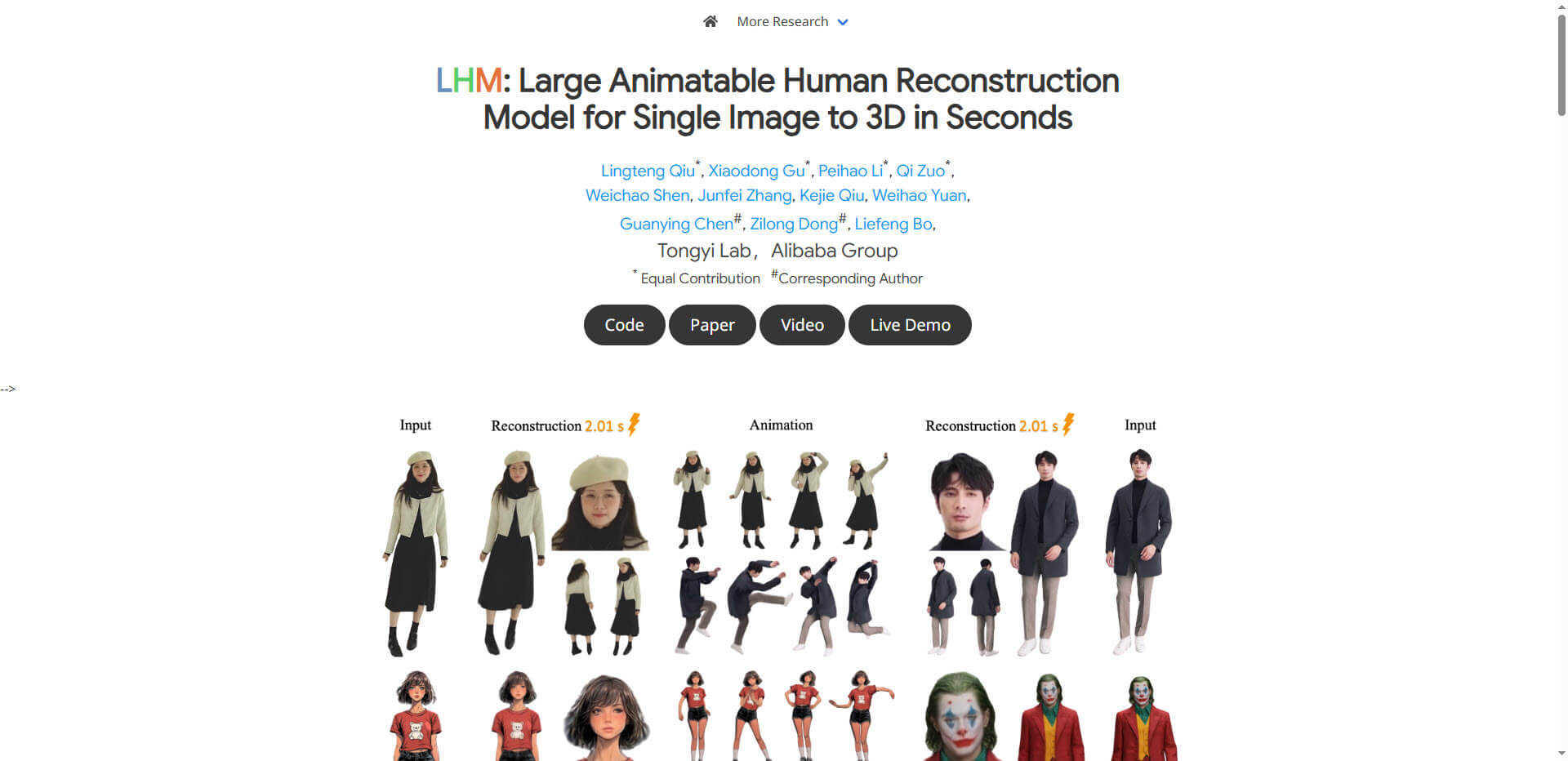Generative AI is revolutionizing the creation of realistic 3D avatars through groundbreaking advances in the modeling of human figures.
The development of LHM (Large Human Model) marks a significant advance in AI-powered 3D content creation. This innovative system enables the generation of detailed, realistic human avatars based on simple text descriptions. The two-stage process – consisting of text-to-image generation and subsequent image-to-3D reconstruction – surpasses previous methods in terms of quality, variety and user-friendliness.
The efficiency of the system is particularly remarkable: LHM can generate complete 3D models within a few seconds, which are characterized by high-quality textures and natural poses. The fine-grained control using natural language opens up new possibilities for designers, developers and creative professionals in various industries.
Technical innovation meets practical relevance
The technical architecture of LHM is based on a combination of diffusion models for text-to-image generation and a special 3D-aware reconstruction network. The integration of optimization methods for multi-view consistency ensures that the generated avatars appear realistic from all viewing angles. This approach solves one of the core problems of previous text-to-3D systems: the authentic representation of human figures with correct proportions and natural poses.
In the context of current developments in the field of generative AI, LHM joins a line of significant advances. While models such as DreamFusion and Point-E have already demonstrated text-to-3D object generation, LHM addresses the specific challenges of human figure rendering – a much more complex endeavor with higher demands on realism and anatomical correctness.
Implications for the creative industry
The practical implications of LHM for the industry are significant. In game development, rapid prototyping of characters could significantly speed up the production process. Virtual reality and metaverse applications benefit from the ability to generate individual and diverse avatars. The film industry and animation are also opening up new avenues for the creation of digital humans.
At the same time, this technology raises important questions regarding ethical aspects. The ability to generate photorealistic human figures requires responsible usage guidelines to prevent misuse. The research community is faced with the task of both further developing technical capacities and implementing appropriate security measures.
Summary
- LHM uses a two-step process (text-to-image and image-to-3D) to generate realistic human avatars
- The technology enables the generation of 3D models within a few seconds
- Text-based control allows precise definition of appearance, clothing and poses
- LHM offers significantly higher quality and variety compared to previous methods
- The innovation has wide-ranging applications in gaming, VR/AR and digital media production
- The development is in the context of current advances in generative 3D AI
- Ethical aspects and responsible use must be taken into account in further development
Source: GitHub







